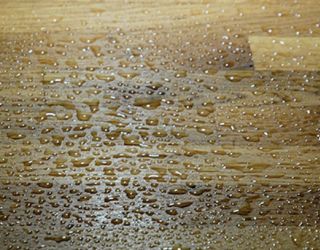The Best Ways to Clean Sticky Wooden Kitchen Worktops
Countertops are one of the most important features in a kitchen and keeping them clean and hygienic is of paramount importance.
Sticky wooden kitchen worktops can occur for a number of reasons, which can make them more likely to attract dust and crumbs, becoming unsanitary. In this information guide, we take a look at two common occurrences of sticky work surfaces and how to resolve them.

Food and Drink
When preparing or cooking food spillages can cause sticky residues to develop. The best method for removing stickiness is preventative – as soon as any spills occur, wipe down all surfaces using a clean damp cloth and warm soapy water.
If food or liquid have congealed into a sticky residue, avoid using spray disinfectant, especially if you have recently treated your wooden worktops with Danish oil as this can exacerbate the stickiness. Instead, make a dilute solution of warm water and lemon juice and wipe down the area with a clean, lint-free cloth.
Repeat as many times as needed to remove the sticky patch.
Sticky Danish Oil
Although Danish oil is the best method for maintaining your solid wooden worktops, it can become sticky if a spray disinfectant is used, especially if the oil has been freshly applied.
Danish oil can also become sticky if applied incorrectly, at the wrong rate. To avoid this, we recommend applying 1 litre of oil per 3m of worktop. You can read about the correct application of Danish oil in our Guide to Danish Oil.
When applying the oil, ensure that it is fresh. If it is an old can, the oil may turn tacky so it is best to buy fresh oil if you are unsure.
To remove the sticky oil patch, wet a cloth with white spirits and, using a circular motion, wipe it over the worktop a small area at a time. This will dissolve the oil. Then simply polish the worktop with a polishing pad until the oil has been removed.


 65,000+ Reviews | 4.8 TrustScore
65,000+ Reviews | 4.8 TrustScore